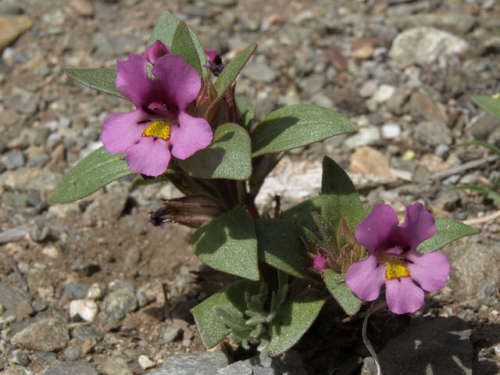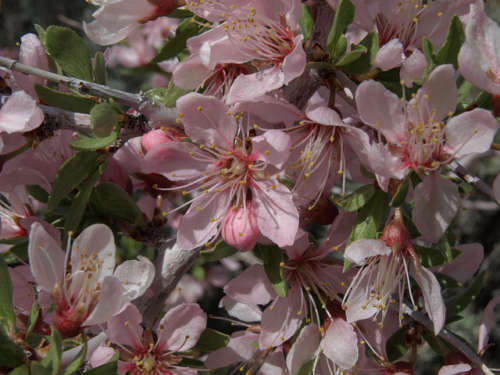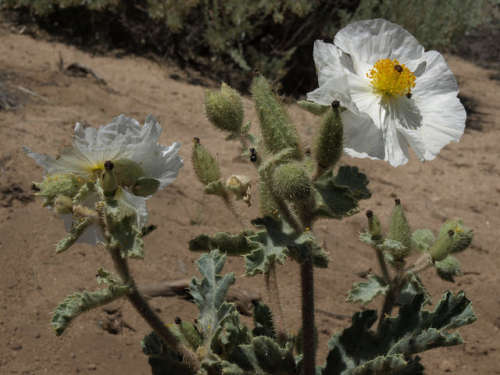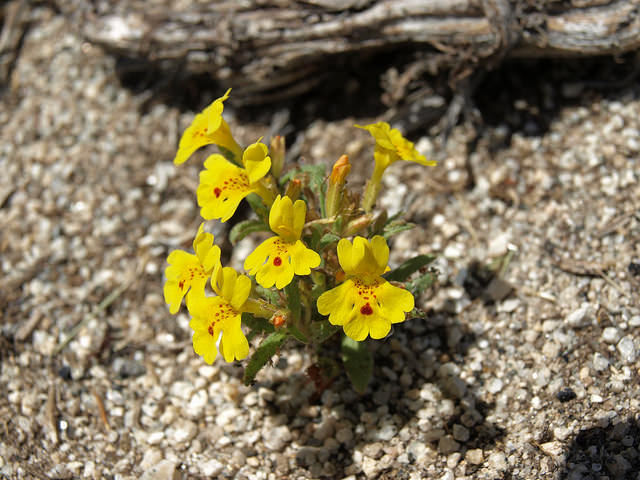The growing network of Carson Valley trails provides gateways to many different wonders and this year our native backcountry wildflowers promise to be top among them. Over the years, CVTA trails have given my family (kids and dogs included!) the enjoyment of exercise, valley views, and access to higher country. As a botanist by profession and avocation, my eyes can’t help scanning the plant life constantly along the way. I always pack a camera for those irresistible flower moments. If you see a guy on his belly with a camera in his face, don’t worry, I’m still breathing! In my job I work with the rarest species, so I’m especially excited by the obscure or unusual flowers, but I also try to capture the more common and showy ones. For an online collection of identified images, search for my name on flickr.com, and an album named Carson Valley Trails Wildflowers.

Steamboat Monkeyflower, Diplacus Ovatus. Photo by Jim Morefield
Trails in the CVTA network pass through a diversity of biological zones, from sagebrush semi-desert and pinyon-juniper woodlands, through interior chaparral and Jeffrey pine forests, into subalpine fir forests and across wetland and floodplain areas. Each of these zones harbors its own diversity of plant life, with different species showing up at different times of year during the growing season.
With their sandy granite soils and higher annual rainfall, the areas around the westside trails (Fay-Luther, Jobs Peak Ranch, Genoa, Clear Creek) present a mix of Great Basin and Sierra Nevada species. On the east side, the Pinyon Trail traverses limestone and clay soils in a drier climate, which support a much different but still exciting diversity of wildflowers. On River Fork and Bently Heritage trails you encounter floodplain and wetland species that bloom later in the year, well after peak runoff.

Desert Peach, Prunus Andersonii. Photo by Jim Morefield.
With a keen eye, you can spot some of our local rare wildflowers near our trails. The sandy slopes and flats of Carson Valley and Washoe Valley are the only places in the world where Carson Valley monkeyflowers (Erythranthe carsonensis) live, including spots near the Fay-Luther and Clear Creek trailheads. This tiny annual species produces bright yellow, red-spotted flowers after wet winters. In dry years, seeds remain dormant, camouflaged in the sand, awaiting the next droughtbuster. Lavin eggvetch (Astragalus oophorus lavinii, in the Pea Family) is found only in the Pine Nut and Sweetwater Mountains and the Wellington, Pine Grove, and Bodie Hills. If you happen across either of these species, you can help maintain up-to-date conservation information by reporting sightings to my office at the Nevada Natural Heritage Program (http://heritage.nv.gov).

Prickly Poppy, Argemone Munita. Photo by Jim Morefield.



